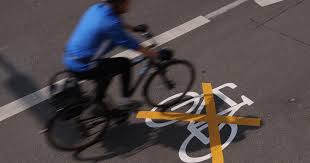What Are Radhäuser? Radhäuser (literally “bike houses” in German) are secure, enclosed bicycle parking stations commonly found in German urban environments. Designed to promote cycling as a daily mode of transport, these structures serve as protected shelters for bicycles—offering security, convenience, and weather protection.
Unlike simple bike racks, Radhäuser offer a systematic approach to urban cycling infrastructure, often integrated into city planning, transport hubs, and residential zones.
The Rise of Cycling Infrastructure in Germany
Germany has long championed sustainable transport. As climate goals tighten and urban congestion worsens, cities across the country are investing heavily in bike-friendly solutions.
Key stats:
- Over 80 million bicycles in Germany as of 2024.
- Cycling accounts for nearly 20% of all inner-city trips.
- More than 200 Radhäuser have been built across major cities including Berlin, Hamburg, and Munich.
These developments are backed by federal policies, including the National Cycling Plan (NRVP) and municipal subsidies that incentivize bike commuting.
Why Radhäuser Matter
Radhäuser are more than just shelters—they represent a cultural shift toward eco-conscious mobility and smart city planning.
Benefits include:
- Reduced bike theft through locked, monitored access.
- Weather protection that keeps bikes in good condition.
- Encouragement of everyday cycling among commuters and families.
- Integration with public transit, supporting multimodal transport.
They also address a key barrier: people are more likely to cycle when they know their bike is safe at their destination.
Features of a Typical Radhäuser
While designs vary by location, most Radhäuser share a set of core features:
- Secure access via keycard, app, or RFID.
- CCTV surveillance and motion-sensor lighting.
- Two-tier bike racks to maximize space.
- Repair stations with basic tools and pumps.
- Electric bike charging ports (in newer models).
- Weather-resistant architecture with ventilation.
Some Radhäuser are even solar-powered, reinforcing Germany’s clean energy goals.
Radhäuser vs. Traditional Bike Parking
| Feature | Traditional Racks | Radhäuser |
|---|---|---|
| Security | Minimal | High (lockable, CCTV) |
| Weather Protection | None | Full coverage |
| Accessibility | Open, unsupervised | Controlled access |
| Capacity | Limited | High-density |
| Maintenance Tools | Rarely included | Often included |
In short, Radhäuser offer a premium, scalable alternative to outdated infrastructure.
Case Studies: Cities That Got It Right
Freiburg
Freiburg introduced Radhäuser near major transit stations in 2019. Within a year, bike thefts dropped by 40%, and public satisfaction with cycling infrastructure rose significantly.
Cologne
Cologne implemented modular Radhäuser designs that can be relocated or expanded. These units are especially popular in university districts and residential blocks.
Münster
Known as Germany’s cycling capital, Münster features multi-story Radhäuser with digital check-in, capacity for over 1,000 bikes, and solar-paneled roofs.
Challenges and Criticisms
While generally well-received, Radhäuser face a few hurdles:
- High construction costs, especially for larger models.
- Limited availability in rural areas.
- Occasional maintenance issues (like vandalism or software glitches).
- Accessibility concerns for the elderly or disabled.
Still, surveys show that over 70% of users are satisfied and believe Radhäuser make cycling more attractive.
Future of Radhäuser in Europe
With the EU pushing for carbon-neutral cities by 2050, Radhäuser are likely to spread beyond Germany.
Predictions:
- AI-powered access systems for real-time occupancy tracking.
- Integration with smart city apps for location-based navigation.
- Expansion into suburban zones to support longer commutes.
- Cross-border replication in cities like Amsterdam, Copenhagen, and Zurich.
The concept is evolving into a pan-European standard for sustainable transport.
FAQs About Radhäuser
❓ What does “Radhäuser” mean in English?
“Radhäuser” translates to “bike houses”, referring to enclosed, secure bicycle parking structures.
❓ Are Radhäuser free to use?
It varies. Some are free, while others charge a small monthly or daily fee, especially in high-demand areas.
❓ Can electric bikes use Radhäuser?
Yes. Most modern Radhäuser include charging stations and e-bike-compatible racks.
❓ How do I find a Radhäuser near me?
In Germany, local transport apps and city websites often list Radhäuser locations, availability, and pricing.
ALSO READ:
https://cinsoft.net/online-visibility-services-by-garage2global/
Conclusion
In a world grappling with climate change, traffic congestion, and urban stress, Radhäuser offer a smart, practical, and forward-looking solution. They make cycling not only safer but also more desirable—changing the way people move through cities.
As more governments and citizens embrace sustainable living, Radhäuser are set to become symbols of modern, resilient urban life.

